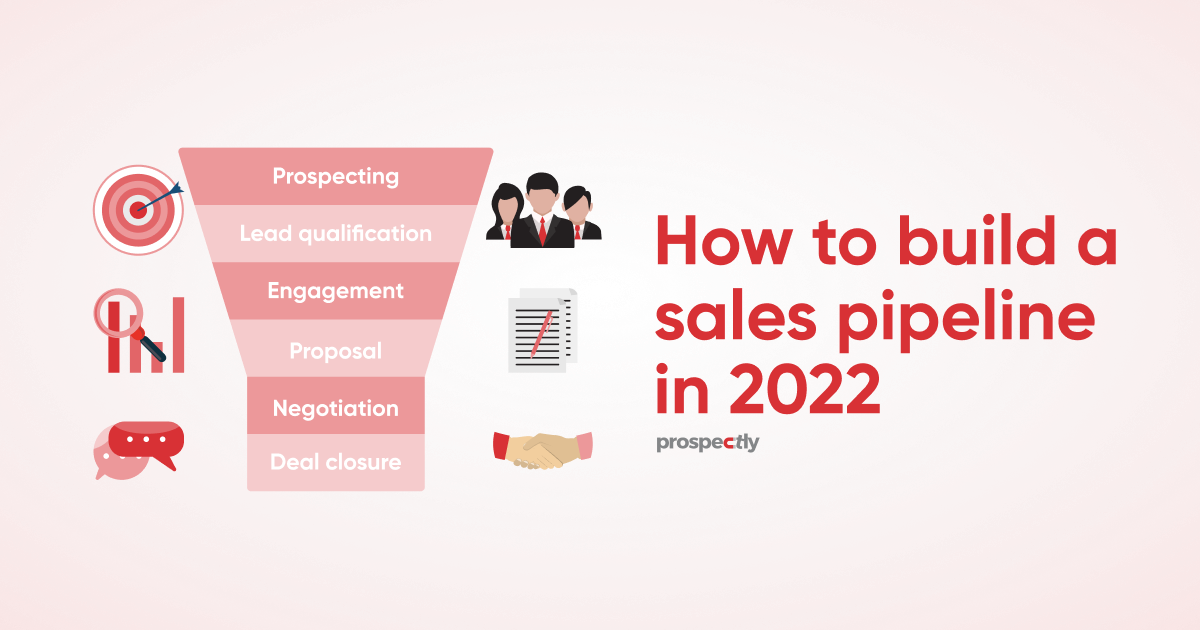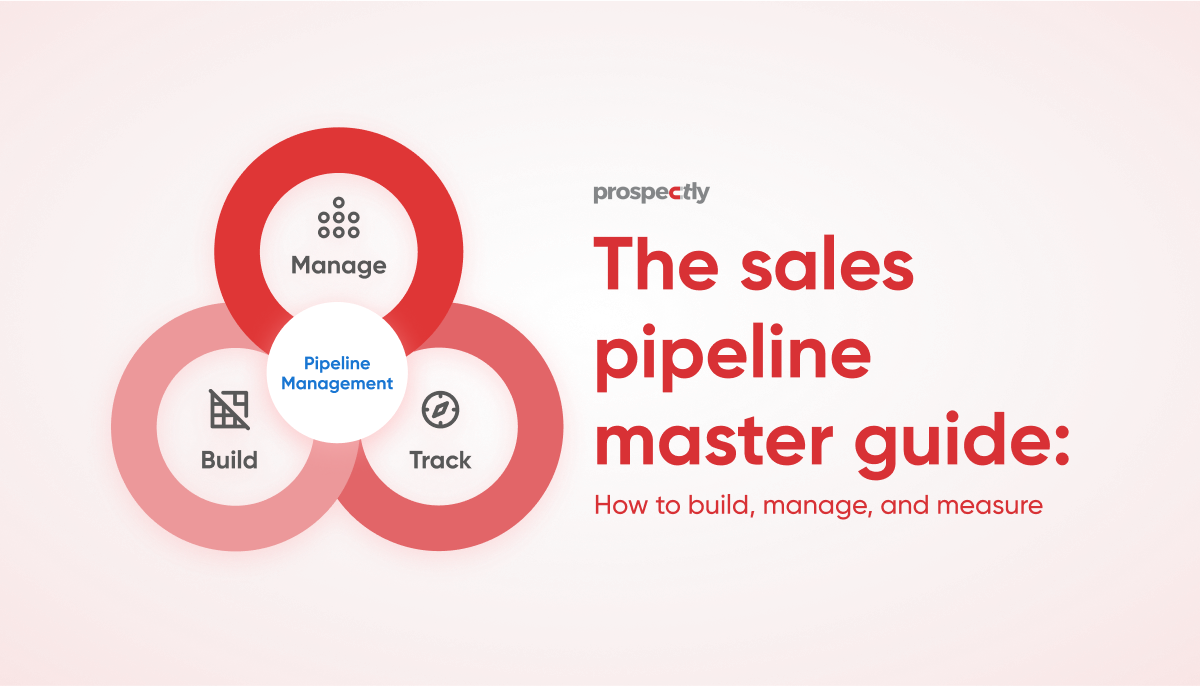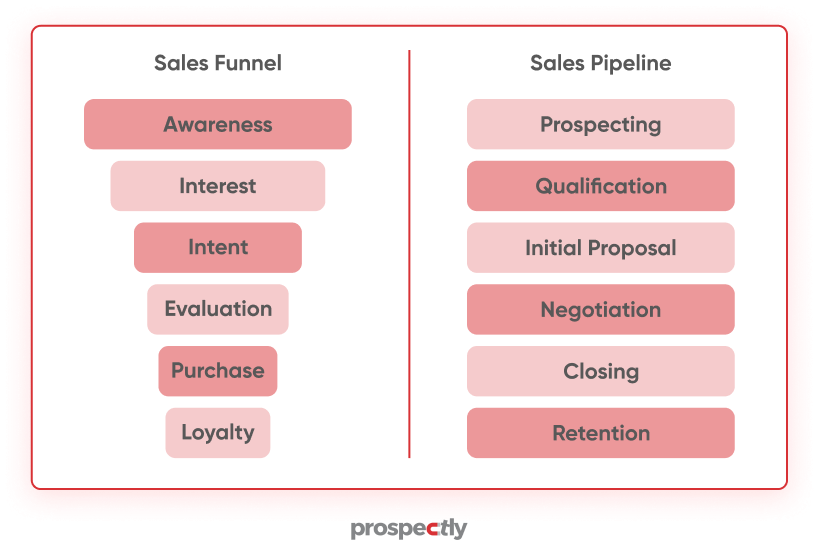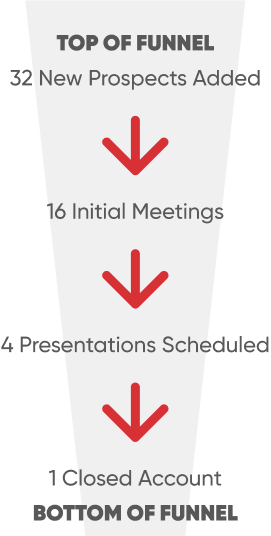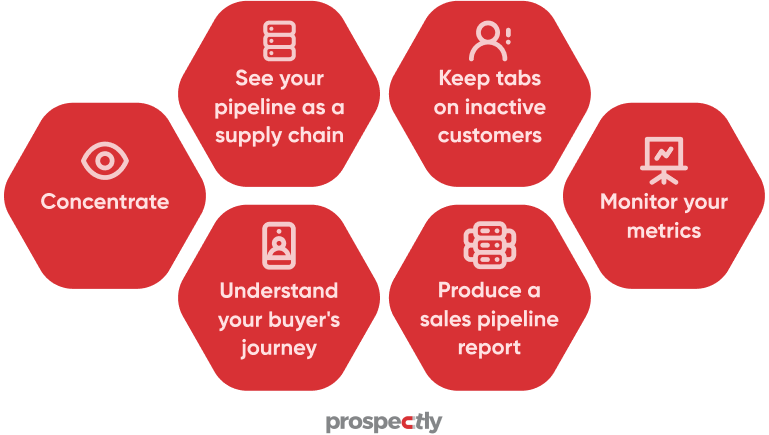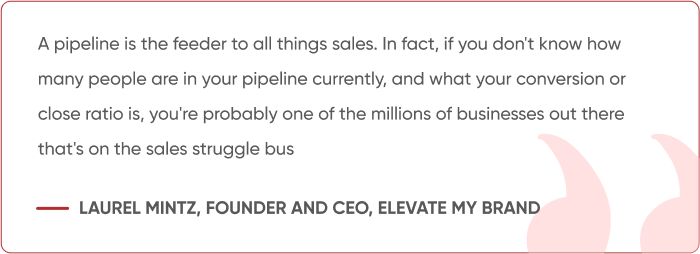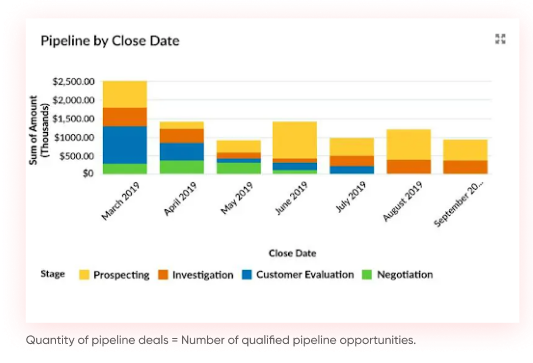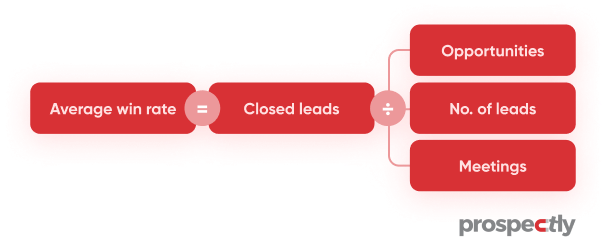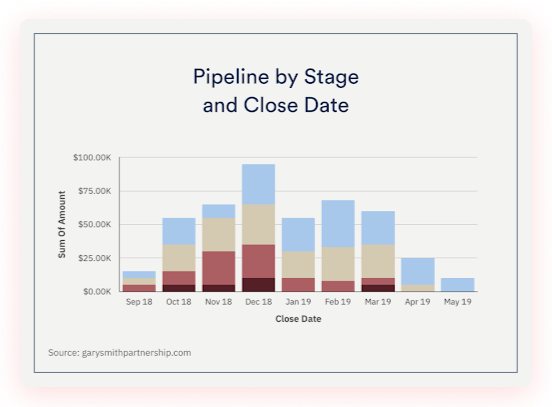If you are a seasoned sales rep, you would understand the significance of the sales pipeline. A Sales Pipeline is a visual representation of the activities which help a salesperson convert a prospect into a customer. A well-envisioned sales pipeline can act as your North Star in an otherwise dynamic business environment. To learn more about the importance of a sales pipeline, check out our comprehensive blog on The Sales Pipeline Master Guide. This article will focus solely on the actionable insights for building your sales pipeline in 2022.
Before we dive deep into the technicalities, enjoy this hilarious yet motivating video by Social Sales Evangelist, Tom Boston from SalesLoft and recover from your holiday hangover!
Building your sales pipeline in 2022
So you had a great time over Christmas and New Year, made your resolutions, and are back at work. It’s time to re-evaluate your pipeline and set your targets for a brand new year. Are you looking at an empty pipeline because you exhausted your opportunities last year? Could you have done something to avoid this? Go through the below checklist before you learn the fundamentals of building your sales pipeline in 2022.
Pre-holiday season prep for sales pipeline
Unlike your colleagues from other departments, being in sales does not offer you the luxury of enjoying the relaxed working hours of the holiday season. To ensure you start strong in the new year, you can try out the following steps.
- Build up next year’s sales pipeline with the leads who have promised you a sale or pushed discussions until next year. These contacts are quite likely to sign up in the new year.
- Many companies plan the following year’s budgets at year-end meetings. A quick check-in with your prospects before the holidays may help you lock in a few sales in the new year.
- Start your territory planning for next year. Once you make a list of the target accounts in your assigned territory, you will need to spend time in lead qualification. Completing this time-consuming process before the year starts will help accelerate your pipeline next year.
- Review your closed deals from the year and also examine the differences between opportunities won and lost. This will help you conceptualize your ideal customer and you can follow this pattern when you target leads next year.
6 Steps to build a successful sales pipeline
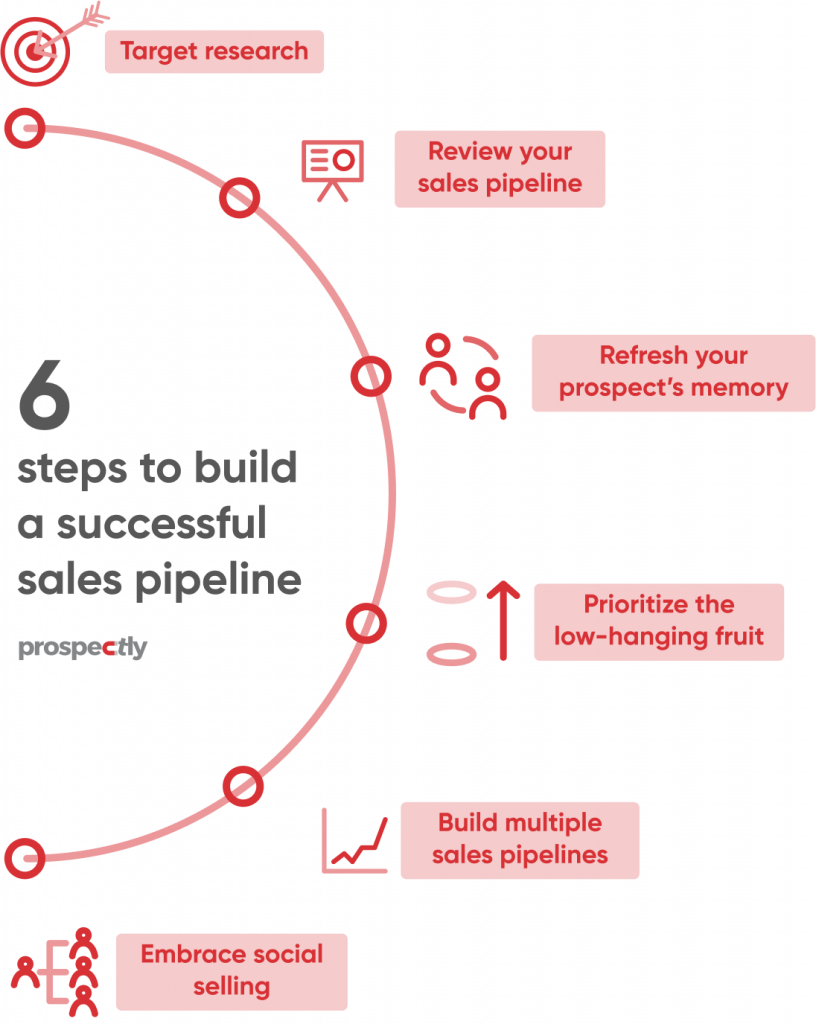
It helps to know what you could have done last year to enjoy a comfortable first quarter in the new year. However, since we have crossed that bridge, let’s talk about what you can do this year to secure a stellar sales pipeline.
1. Target research
To build an ideal pipeline, you need to conduct an extensive target market analysis.
- Figure out your potential customer demographic – their age, gender, education, job description, income, location, etc.
- Make sure you procure accurate and updated contact information. This list is your Bible, it will save you a lot of dead-end Google searches and cold calls. Hence, you can not underestimate the value of an efficient database provider.
- Study your target market’s buying behavior. This information can be obtained by conducting customer pulse surveys or reaching out to companies that offer such services.
- Run a competitive analysis. Know your competitors, and their strengths and weaknesses. It will help you determine your USPs.
- Finally, keep your assigned revenue targets in mind while collating this list.
2. Review your sales pipeline
- Go back to your 2021 sales pipeline and measure the conversion rate per stage. For instance, your opportunities in the negotiation stage might have a 70% chance of closing and those in the proposal stage might have a 40% chance for the same. This gives you the ideal customer profile to focus on from your sales pipeline for 2022.
- If you have already prepared your pipeline for 2022 before wrapping up for the holidays, it is crucial to review it carefully at the start of the new year. It is possible that customer priorities or even territories may have changed in the new year. So revisit your plan and customize it accordingly.
3. Refresh your prospect’s memory
Don’t jump straight into the ‘sales chase’ when you get back to work in the new year and start your sales follow-ups (whether with an old prospect or a new lead). Some of your customers may be getting back from an extended holiday and need some time to catch up with work. Instead, approach with an educative mindset and start by sharing information like product/service manuals, informative videos or invite them to a live webinar.
Here are some email templates you could use. You can modify them based on your offerings.
Old Prospect
Hi Gary,
Happy New Year! Hope you had a wonderful time with your family.
I know you are probably just getting back to work and settling in. In the meanwhile, why don’t you go through this quick ppt/join our live webinar at [insert time, date, and topic]?
This material will refresh our conversation from last year. I will reach out to you in a few days to discuss the same or you can give me a call when you are ready.
Hope you have a great start to the year.
[Insert your signature]
New Prospect
Dear Mr. Goldberg,
Here’s wishing you a very happy new year!
I would like to take this opportunity to introduce [insert your company name + expand on product/service]. I know you probably are just back from the holidays and taking the time to find your bearings. While you do so, kindly go through this ppt?/would you have time to listen in on this webinar on [insert time, date, and topic]?
Once you have settled in, I would like to discuss your [insert product/service needs].
Wishing you tremendous success in the new year!
[Insert your signature]
4. Prioritize the low-hanging fruit
While you analyze your ToFu (Top of the Sales Funnel) from last year, watch out for the easy wins. Below are a few such examples, along with the email scripts you could use.
A prospect who asked you to connect next year.
Dear Mark,
Here’s wishing you a happy and successful new year.
I thought to connect with you early this year to revisit our discussion on [insert your product/service details]. Let’s start this year by addressing [insert the pain points or prospect’s business needs] and strengthening your relationship with [insert your company name]
Do let me know a good time to speak.
[Insert your signature]
A prospect who had regretted because they exhausted their budget last year.
Hey Mark,
Hope you had a fantastic holiday season.
I just wanted to circle back to our discussion from last November. As I can recall, you were quite interested in utilizing us for your [insert their business needs]. It would be great if we can catch up soon so you can pencil us in your budget for the year.
[Insert your signature]
A prospect whose company operates on a fiscal calendar. This might be a good time to persuade them before the financial year-end.
Hello Mark,
Hope you are well and starting the year more energized than ever!
I recall you were quite impressed with our [insert your product/service] at our last meeting. It would be great if we could revisit our discussion before you wrap up your business priorities for the financial year.
Could we slot a quick call in the coming days?
[Insert your signature]
A prospect who decided to go with a competitor. Find out about their experience. This may be your chance to approach them if things didn’t go as they had planned.
Hey Mark,
Happy new year! It’s been a while since we spoke.
I just wanted to quickly revisit your [insert your product/service] needs for this year. I am aware that you signed up with [insert competitor’s name] last year. Should you feel any gap in their service, I would be happy to try and address the same with our product/service.
Feel free to reach me at the same number.
[Insert your signature]
5. Build multiple sales pipelines
You may need more than one pipeline based on certain factors.
- Since your pipeline summarizes your prospect’s journey through various stages, you may require more than one pipeline depending on your prospect’s company size. Your client from an MSME may go through a different buyer journey compared to the one from a Fortune 500 firm. So it’s better to create separate pipelines for each company type.
- If you sell more than one product or service, once again each product/service may necessitate a different customer journey. Hence, it is important to have different sales pipelines for each product/service category.
6. Embrace social selling
For decades, cold calls and emails have been the go-to method for salespeople to connect with prospects. However, social selling has now become an indispensable strategy for businesses, especially since Covid-19. According to Spotio, 84% CXOs rely on social media to make buying decisions. LinkedIn’s Social Selling Index reports that 78% of social sellers outsell the sales professionals who don’t use social media.
Some of the social selling practices that you could implement are-
- Invest in building your professional brand. It will attract more responses as well as inquiries from your prospects.
- Follow your target companies on social media and watch out for buying signs like new acquisitions, launches, or hiring announcements for marketers.
- Share relevant solutions to common pain points or your opinion on current topics. This will help you establish yourself as a subject matter expert in your industry. Devise your content strategy in line with your potential customer’s needs and interests.
Best practices in sales pipeline management
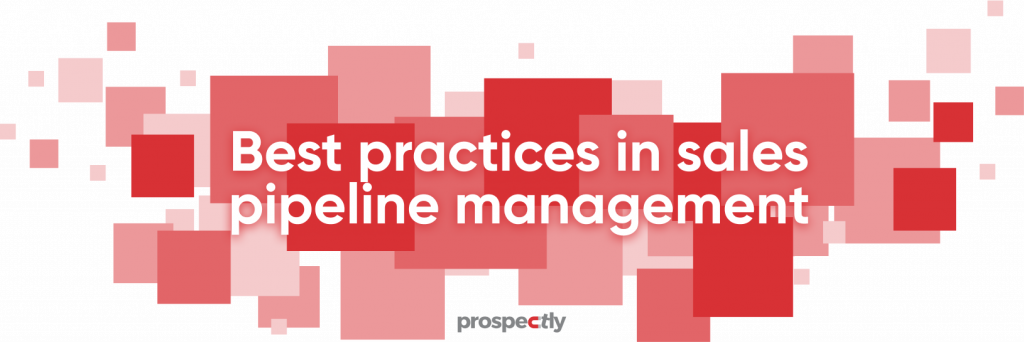
Once you have designed your customized sales pipeline for 2022, it is time to organize, strategize and track those opportunities in your pipeline. This process is known as Sales Pipeline Management. A well-managed sales pipeline will give you a clear picture of your company’s health, facilitating business analysis and planning. The following are some of the best practices in sales pipeline management, which should help streamline your sales process if followed meticulously.
Track your sales pipeline metrics
To manage your sales pipeline effectively, define the sales metrics to help you reach your revenue targets. These metrics may differ from company to company depending on the business type and size. Some of the most common metrics used by organizations are-
- The number of deals in your pipeline – This gives you a snapshot of the number of leads generated per month from various sources.
- MQL (Marketing Qualified Lead) – SQL (Sales Qualified Lead) conversion rate – This number will identify if your marketing and sales teams are in sync with each other.
- Average deal value – Dividing the sum of the value of all deals by the number of total deals gives you an approximate deal value which helps predict the revenue.
- Win rate – It can predict the number of qualified leads that turned into customers.
- Sales Cycle – It denotes the average time taken by a sales rep to convert a lead into a sale.
- Pipeline velocity – This measures the rate at which high-value opportunities move from one end of the funnel to another.
Actively engage in pipeline review meetings
After all the time and effort you spent building your sales pipeline, you may feel like you have complete control over it. And you may do. However, a third-party perspective always helps, and going through your pipeline with your manager and team members will help you identify any missing links you may have overlooked. Depending on the duration and frequency of your pipeline review meetings, here are a few things you could do to maximize your takeaways from such discussions.
- Present a quick overview of each deal along with your closing timelines so it helps your manager with sales forecasting.
- Highlight the areas/stages in the pipeline you struggle with and note down any insights from your manager and team members. For instance, if you often grapple with the lead qualification stage, check with your manager for action items to identify the right prospects.
- Request your reporting head for tips on how to expedite the decision-making timelines for the slow-moving prospects.
- Share your competitor analysis in the meeting and seek suggestions on how to strengthen your USPs.
- Share your success stories as well. This will encourage your team members and help them overcome similar objections in the future. Additionally, it educates your manager about your strengths which should help in annual review meetings.
Clean up the sales pipeline
A well-stocked pipeline may not always be the answer to achieving your year-end goals if it is filled with cold leads. From time and again, it is essential to examine your sales pipeline and clean up opportunities that show no promise of closure. Here are a few steps to follow.
- Review your sales pipeline and conduct regular pipeline health checks. Look out for non-responsive leads or prospects who are stuck in certain stages. Use your judgment and ramp up your follow-ups or eliminate them from your list. Additionally, to make up for the number of leads eliminated, ensure your pipeline does not dry up. Maintain a regular inflow of fresh leads with consistent prospecting.
- List out the prospects with longer than your average sales cycle. Evaluate the actual reason behind the lag- is it their complex approval process or is the prospect just non-responsive? Eliminate prospects from your pipeline if you don’t find a valid reason for the delay in closure.
- Use the insights gained from pipeline review meetings to decide whether a lead qualifies to be included in your pipeline. Your manager or team members might have faced similar prospects and you could learn from their experience.
- Keep your contact database accurate. Update opportunities regularly. This should help clean up dead-end opportunities from your pipeline.
- Lastly, before you remove a prospect from your pipeline, send a reminder email summarizing your last conversation, your USPs, and check for a workable timeline on their decision. You can use something similar to the email format below.
Hello Tim,
It’s unfortunate that we haven’t connected in a while. I feel we could have helped you with [insert prospect’s business needs] and wanted to give it one last shot.
Do let me know if we can connect for a quick discussion? If I don’t hear from you, I will assume this wasn’t the right time and conclude my follow-ups.
Irrespective of your decision, I look forward to your response.
[Insert your signature]
Accelerate your sales cycle
Even though the probability of deal closure ultimately depends on the prospects’ needs and interests, there are a few things you can do to expedite this process. It will either encourage your target to make faster decisions, block the sale or worse case regret the opportunity, which ultimately saves you follow-up time.
- Identifying the key decision-maker is the first step that can substantially shorten or lengthen the sales cycle. It will save you endless cold calls and follow-up emails.
- If you are offering a free period, ensure it is properly utilized. Check if your prospect has logged in to the platform. Follow-up if the trial has not been used or check with them if you can answer any technical questions they may have.
- Whenever possible, pin down bottlenecks and find a solution. For example, if your prospect is indecisive, increase your follow-ups and offer to help him reach a decision any way you can. If it is a pricing issue, draw a comparison between your competitors and highlight the benefits of prioritizing quality over budget. You could also check with your boss for a limited period discount.
- Avoid manual work by automating your sales process wherever possible. Make use of sales management tools or CRMs so you spend more time on making money and less on record keeping.
Utilize sales pipeline management tools
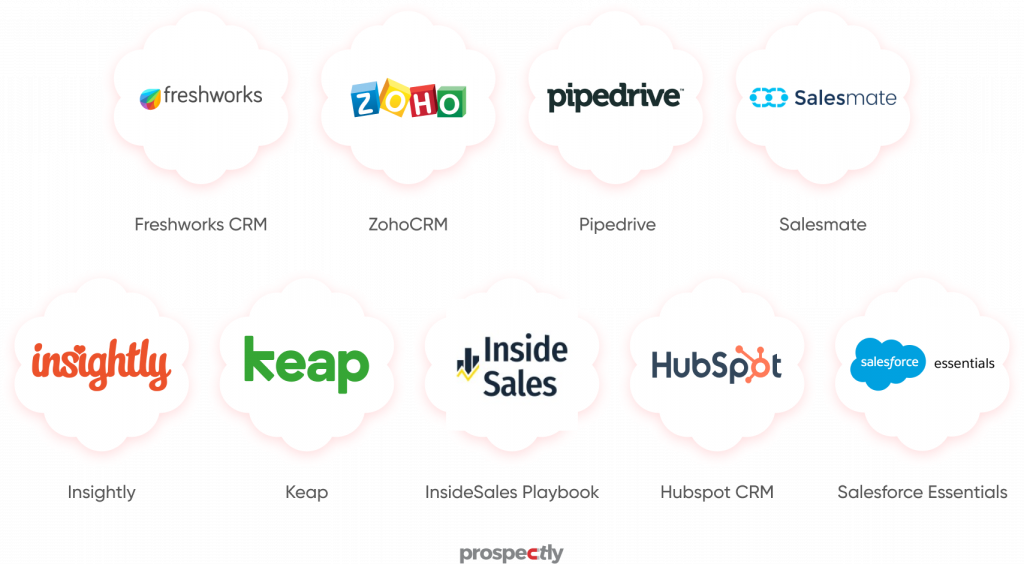
To further your sales process and thereby build an efficient pipeline, you would need the help of a few pipeline management tools. The best sales pipeline management software or CRM will reduce manual work by managing your database and offering AI-powered deal insights. Such CRMs can also generate effective pipeline reports that enable pipeline forecasting, automate deal tracking, and encourage collaboration between various teams by incorporating visibility into the sales process. Some of the most sought-after CRM tools are listed below. However, before choosing a CRM partner, review the features carefully and choose one that fits your business requirement.
- Freshworks CRM
- ZohoCRM
- Pipedrive
- Salesmate
- Insightly
- Keap
- InsideSales Playbooks
- Hubspot CRM
- Salesforce Essentials
Focus on the end game
Implementing strategies like target market and sales pipeline analysis, focusing on the quick wins, customizing your pipelines (based on what you sell/who you sell to), and adapting social media are crucial to building your sales pipeline in 2022. However, it is equally important to respect your customer’s time and ease them into the process after a long break from work. Ultimately, your prospect is not just a name in your CRM but an actual human being. According to Marketing Sherpa, 79% of marketing leads never convert into sales, and lack of lead nurturing is the most common reason. Take the time to know your customer, build a personal connect and show that you care about their business needs. That will go a long way in building a successful sales career and longstanding business relationship. Furthermore, consistently achieving your revenue targets year on year is not a sprint but a marathon.
